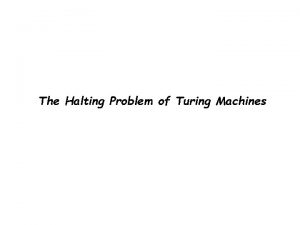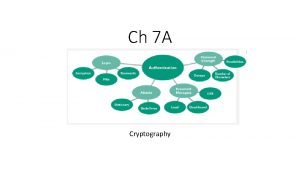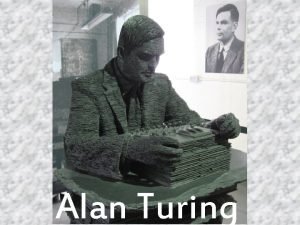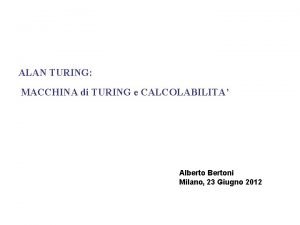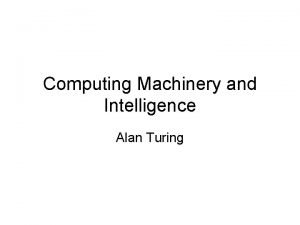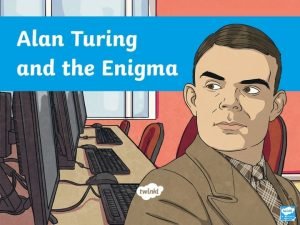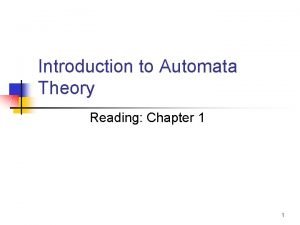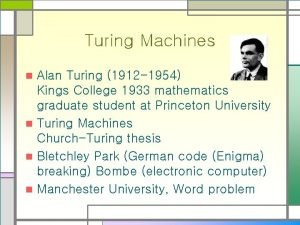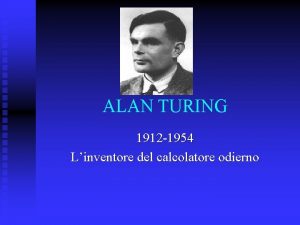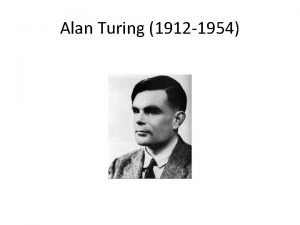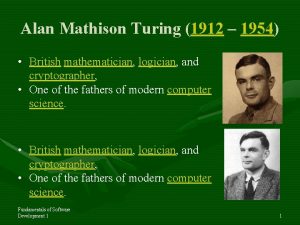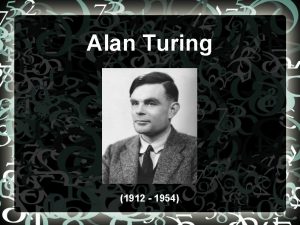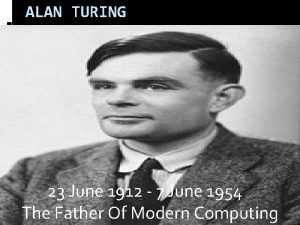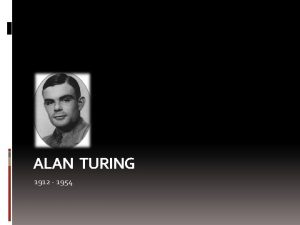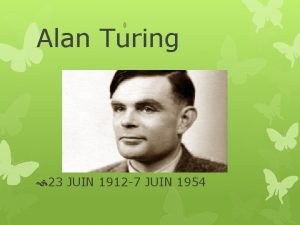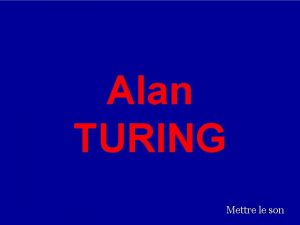Alan M Turing 1912 1954 n n n
















- Slides: 16

Alan M. Turing (1912 – 1954) n n n led the WWII research group that broke the code for the Enigma machine proposed a simple abstract universal machine model for defining computability devised the “Turing hypothesis” for AI

Turing and Colossus n constructed an electronic computing machine (1943) used to decrypt German coded messages

Maurice Wilkes (1913 - ) n n n his Cambridge group constructed EDSAC in 1949 the first stored program, general-purpose electronic digital computer first to use symbolic programs (assembly)

UNIVAC-1 n n first commercial generalpurpose computer system successor to Mauchly. Eckert BINAC delivered in 1951 used to forecast the 1952 presidential election

Computing Generations n FIRST GENERATION (1950 s) vacuum tube technology n SECOND GENERATION (early 1960 s) solid-state technology, magnetic core memories n THIRD GENERATION (1964 – 1970) integrated circuitry (SSI), dynamic memories n LATER GENERATIONS (1970 s – ) VLSI, microprocessors, ultra large-scale integration

IBM/360 n n n built using solid-state circuitry family of computer systems with backward compatibility established the standard for mainframes for decades

DEC PDP Series n n n “minicomputers” offered mainframe performance at a fraction of the cost introduced the unibus architecture for CPU interconnections

Supercomputers n n n high-performance systems used for scientific applications advanced designs (pipelining, parallelism, etc. ) Control Data Corporation, Cray Research, and others

Desktop Computers n n n microprocessors all-in-one designs, performance/price tradeoffs aimed at mass audiences personal computers workstations

Comparison Shopping How do they rate in cost and performance?

Moore’s Law n n n increased density of components on chip Gordon Moore: “Number of transistors on a chip will double every year. ” since 1970’s development has slowed a little n Number of transistors doubles every 18 months cost of a chip has remained almost unchanged higher packing density means shorter electrical paths, giving higher performance trends: smaller size, reduced power and cooling requirements, fewer interconnections

DRAM and Processor Characteristics

Improving Memory Performance n n n increase the number of bits per word, width of data paths employ cache structures to reduce the frequency of memory operations increase the bandwidth of interconnections

Pentium Evolution (1) n n 8080 n first general purpose microprocessor n 8 bit data path 8086, 88 n 16 bit n instruction cache, prefetch few instructions n 8088 (8 bit external bus) used in first IBM PC 80286 n 16 Mbyte memory addressable 80386 n 32 bit n Support for multitasking

Pentium Evolution (2) n n n 80486 n sophisticated cache and instruction pipelining n built in math co-processor Pentium n superscalar, multiple instructions executed in parallel Pentium Pro n increased superscalar organization n branch prediction n data flow analysis n speculative execution

Pentium Evolution (3) n n Pentium II n MMX technology n graphics, video & audio processing Pentium III n additional floating point instructions for 3 D graphics Pentium 4 n more floating point and multimedia enhancements Itanium n 64 bit
 Alan turing julius mathison turing
Alan turing julius mathison turing Alan turing halting problem
Alan turing halting problem Cryptography alan turing
Cryptography alan turing Alan turing infancia
Alan turing infancia Was alan turing married
Was alan turing married Noleggio auto riga
Noleggio auto riga Arnold murray alan turing
Arnold murray alan turing Alan turing stake
Alan turing stake Alan turing boarding school
Alan turing boarding school Turing machine algorithm
Turing machine algorithm Alan turing king's college
Alan turing king's college Alan turing computing machinery and intelligence
Alan turing computing machinery and intelligence Int404
Int404 Frida kahlo 1907 a 1954
Frida kahlo 1907 a 1954 Vietnam 1954
Vietnam 1954 Muhammad yusuf qayerda tug'ilgan
Muhammad yusuf qayerda tug'ilgan 1954
1954

